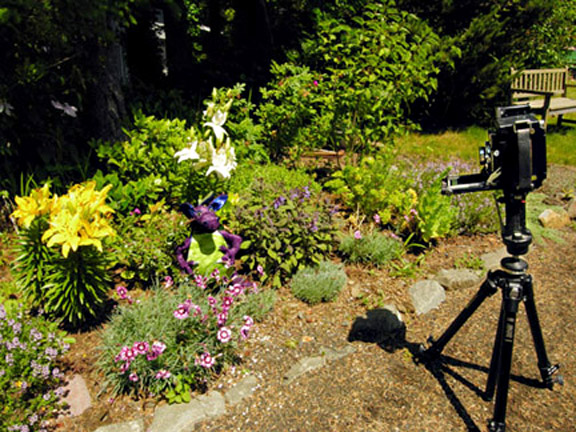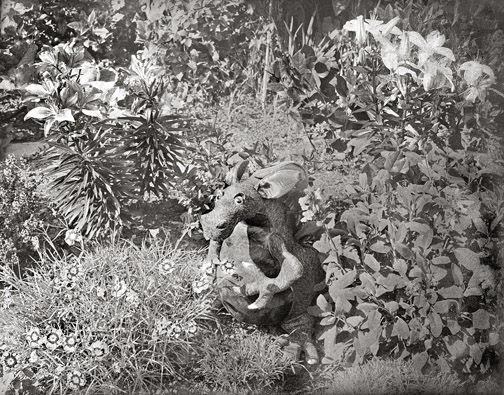|
I don't know if Ansel foresaw the disappearance of 'a wide choice of negative
materials', at least in 1948, but what he said then can hold true for us
today — if we take matters into our own hands. Learning a few
lab skills is the least of it. The challenge is learning to unlearn
'panchromatic visualization' and process-by-quantification.
The first idea to rethink is 'speed'. Beyond a general expectation
that one recipe is usually faster/contrasty'er/grainy'er than another, each
handmade batch of emulsion will be a little different from another, even if
the recipe is identical. The infinity of chemical and physical
reactions involved with emulsion making is the reason Kodak, et al,
obsessed about control. Their obsession (if not their secrecy) was
justified. They were commercial operations, selling to a public
that they, in turn, were teaching to demand consistency. In very
short order, the public had been taught that photographic materials came
from factories.
The effective speed of a plate will be affected not just by the emulsion-making
steps, but by your choice of developer, by the time of day (i.e. color
temperature), filter factors, and where on the characteristic curve of
the emulsion you looking and what exposure/development time combination
you choose to maximize the quality of plate. I highly recommend
reading The Negative, 1948 edition. No one has ever said it
better than Mr. Adams. Some people read A Christmas Carol
once a year. I read The Negative.
Second, treat each new batch of plates as a fresh, unknown set of qualities.
I always coat four 4"x5" plates per batch, no matter what size
plates I'm coating otherwise. For each of my camera/holder sizes I
have one holder retrofit with a 4"x5" adapter. (There's more
about those in the 'Tools' section.) Before I take the big plates
out in the field, I test the 4"x5"s in my backyard to get a sense
of the emulsion. I keep a couple of developers mixed up (Defender 55dwr
and Kodak D-19, plus PMK Pyro if bright sun is expected —
a rarity here) to test the plates. After I know how the
emulsion will behave, I can expose and develop the rest of the plates accordingly.
Below, I begin the first of my own explorations
into the nature and control of non-panchromatic emulsions. I start
with color temperature, because it is the easiest thing to overlook.
To a color-blind emulsion, all light is not created equal.
I follow this with the first of my work with filters. In addition
to these factors, I hope to start looking into some simple color
sensitizing additives someday soon.
|


